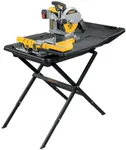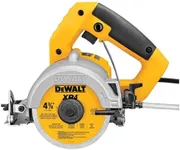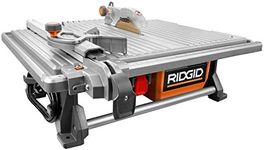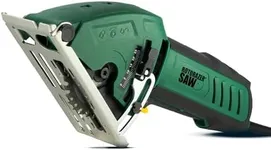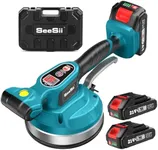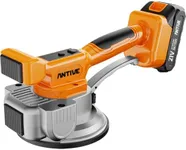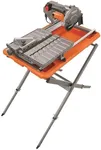Buying Guide for the Best Tile Saws
Choosing the right tile saw can make a significant difference in the quality and efficiency of your tiling projects. Whether you're a professional contractor or a DIY enthusiast, understanding the key specifications of tile saws will help you select the best tool for your needs. Here are the main factors to consider when picking a tile saw.Blade SizeThe blade size of a tile saw determines the depth and type of cuts it can make. Common blade sizes range from 4 inches to 10 inches. Smaller blades (4-6 inches) are suitable for light-duty tasks and smaller tiles, while larger blades (7-10 inches) are better for heavy-duty tasks and larger tiles. Choose a blade size based on the size and thickness of the tiles you plan to cut.
Motor PowerMotor power, measured in horsepower (HP) or amps, affects the cutting performance of the tile saw. Higher power (1.5-2.5 HP or 10-15 amps) allows for smoother and faster cuts, especially through thicker and harder materials. For occasional home projects, a lower power motor may suffice, but for frequent or professional use, a higher power motor is recommended.
Cutting CapacityCutting capacity refers to the maximum size of tile the saw can handle, both in terms of length and thickness. This includes the maximum rip cut (straight cut) and diagonal cut dimensions. Ensure the tile saw you choose can accommodate the largest tiles you plan to work with. For larger tiles, look for saws with greater cutting capacities.
Water SystemTile saws use a water system to cool the blade and reduce dust. A good water system ensures continuous water flow to the blade, preventing overheating and prolonging blade life. Look for saws with efficient water delivery systems, such as adjustable nozzles or built-in water trays. This is especially important for prolonged use and cutting harder materials.
PortabilityPortability is crucial if you need to move the tile saw between job sites or storage areas. Consider the weight and design of the saw. Lightweight and compact models are easier to transport, while larger, heavier models may offer more stability and cutting capacity. Choose based on how often you need to move the saw and the space available for storage.
Accuracy and AdjustabilityAccuracy and adjustability features, such as adjustable fences, miter guides, and laser guides, help ensure precise cuts. These features are particularly important for intricate designs and professional-quality work. If precision is a priority for your projects, look for saws with these adjustable features to achieve the best results.
DurabilityDurability is important for the longevity of the tile saw, especially if you plan to use it frequently. Look for saws made from high-quality materials, such as stainless steel or cast aluminum, which can withstand heavy use and resist corrosion. A durable saw will provide reliable performance over time, making it a worthwhile investment.



